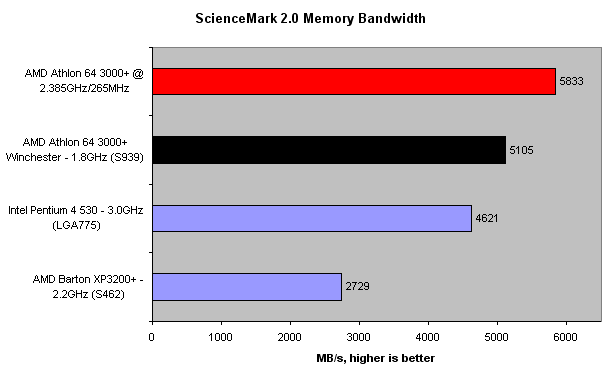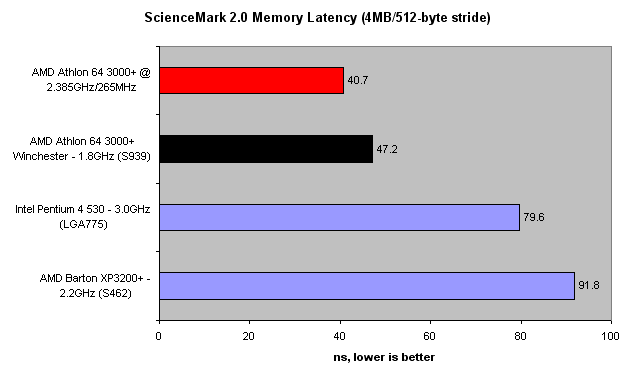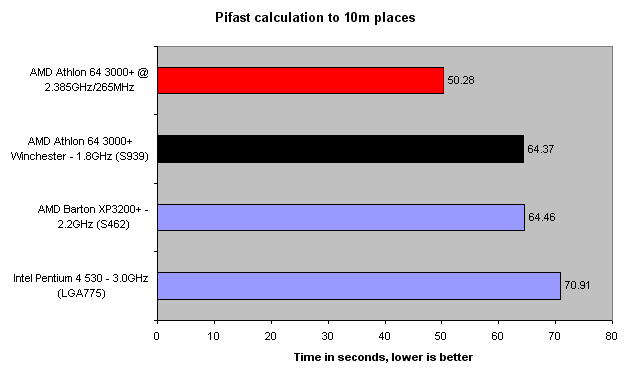Bandwidth, latency and Pifsat
Three completely different core architectures and clock speeds do battle at around the £110 mark. Let's start off analysis with latency and bandwidth consideration.
The advantage of architectures that can fully utilise dual-channel memory is evident when looking at bandwidth results. Cranking it up to 265MHz driven clock outputs almost 6GB/s of bandwidth, according to ScienceMark 2.0.

ns latency is related to both DRAM speed and timings. Raising RAM frequencies, assuming decent timings, shaves of nanosecond latency delay. 40.7ns is pretty damn quick.

Proof of how 1.8GHz > 2.2GHz > 3.0GHz. Our overclocked Athlon 64 3000+ almost manages to crash through the 50s barrier. Impressive.









